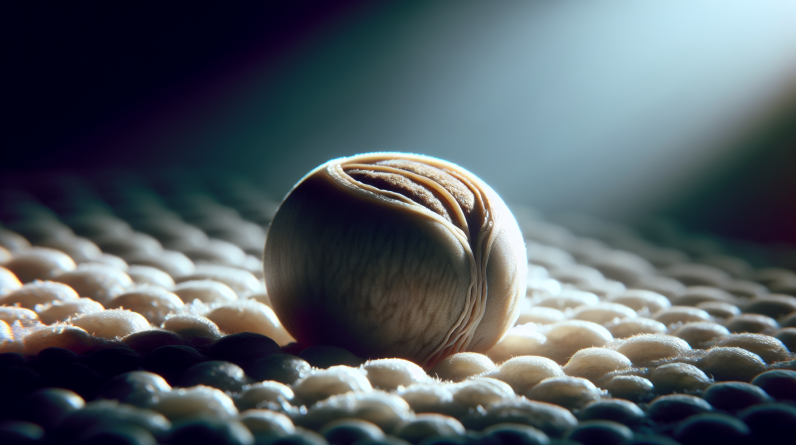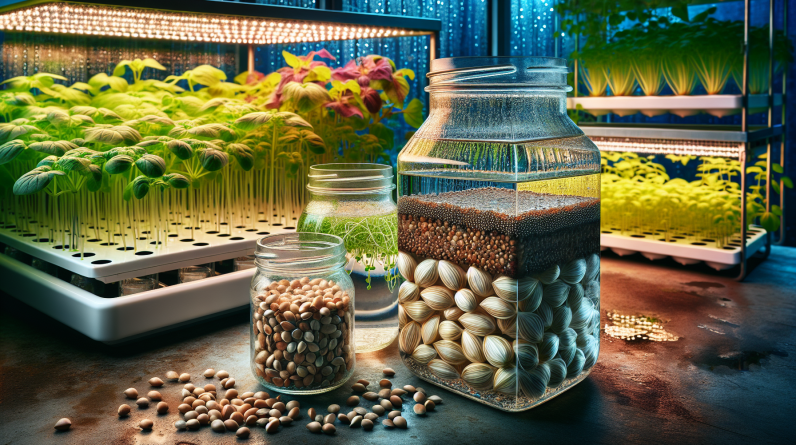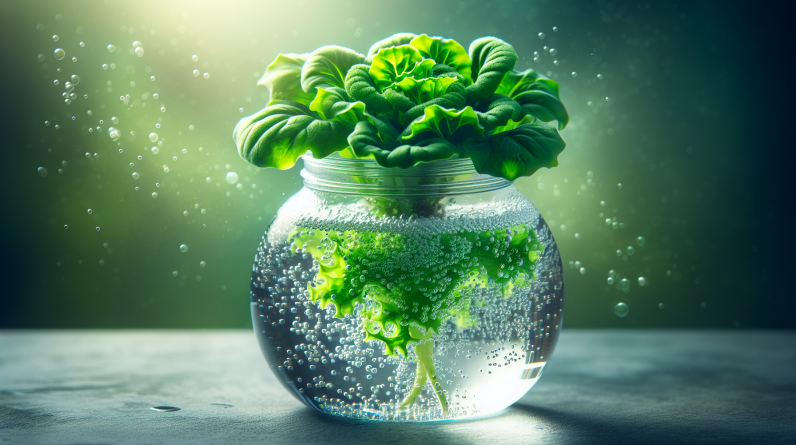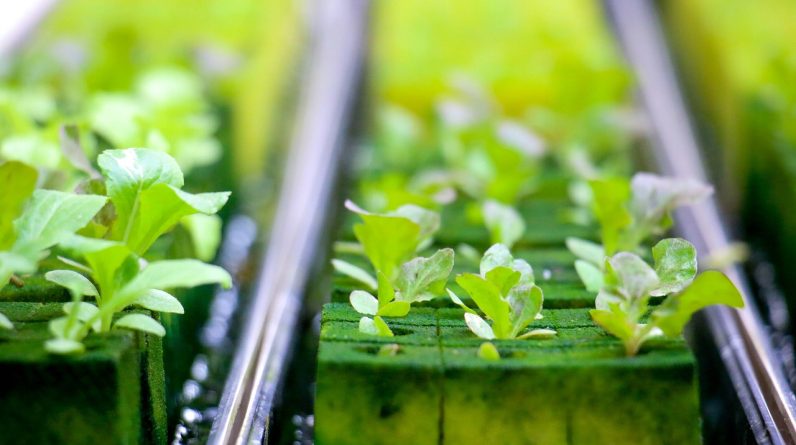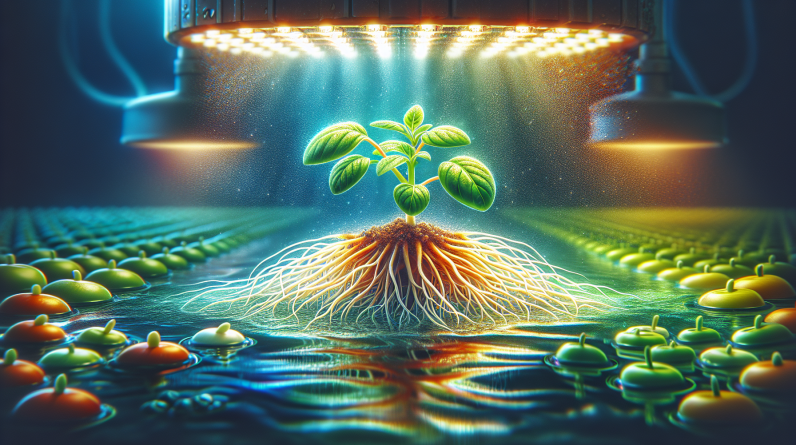
Congratulations on your decision to explore the fascinating world of hydroponics! If you’ve ever wondered about the speed at which hydroponic plants can grow, you’re in for a treat. In this article, we’ll delve into the thrilling realm of hydroponic gardening and discover just how quickly these plants can thrive in a soilless environment. So grab your gardening gloves and let’s embark on a journey to uncover the remarkable growth rates of hydroponic plants. Hydroponic plants have the potential to grow faster than traditional soil-grown plants due to optimal growing conditions provided in a controlled environment. Several factors affect the growth rate of hydroponic plants, including lighting, temperature, nutrient solution, type of plant, and growing medium. By understanding and optimizing these factors, you can create ideal conditions that promote rapid growth and maximize yields.
Lighting
Lighting is a crucial factor that significantly impacts the growth rate of hydroponic plants. Adequate and appropriate lighting is essential for photosynthesis, the process by which plants convert light energy into chemical energy to fuel their growth. In hydroponics, artificial grow lights such as fluorescent lamps, high-intensity discharge (HID) lamps, and light-emitting diodes (LEDs) are commonly used to provide the necessary light spectrum for optimal plant growth.
When selecting lighting for your hydroponic system, consider the light intensity, color spectrum, and photoperiod. Most plants require around 12-16 hours of light per day to thrive. The light spectrum should include both blue and red wavelengths, as these are crucial for different stages of plant growth. Blue light promotes vegetative growth, while red light encourages flowering and fruiting.
Temperature
Temperature plays a vital role in the growth and development of hydroponic plants. Each plant has its optimal temperature range, and it is crucial to maintain these temperatures consistently. Generally, most hydroponic plants thrive in temperatures ranging from 65°F to 75°F (18°C to 24°C). However, certain plants may have specific temperature requirements, so it is essential to research and adjust accordingly.
Extreme temperature fluctuations can negatively impact plant growth, so it is important to provide a stable and controlled environment. Using a thermometer and a heating/cooling system can help you maintain the ideal temperature range for your hydroponic plants. Additionally, monitoring the temperature of the nutrient solution is vital, as it directly affects the root health and nutrient uptake of the plants.
Nutrient Solution
In hydroponics, plants receive their nutrients directly from a nutrient solution mixed with water, rather than from soil. The nutrient solution must contain all essential macronutrients (nitrogen, phosphorus, and potassium) and micronutrients (iron, manganese, zinc, etc.) in the correct proportions for optimal plant growth.
It is crucial to regularly monitor and maintain the nutrient solution’s pH and electrical conductivity (EC) levels. The pH level affects nutrient availability and absorption by the plants. Most hydroponic crops prefer a slightly acidic pH range of 5.5 to 6.5. EC, on the other hand, measures the concentration of nutrients in the solution. It is important to ensure that the EC level is within the appropriate range for the specific plant species being grown.
To optimize nutrient availability and uptake, it is necessary to follow a consistent nutrient feeding schedule and ensure that the nutrient solution is properly mixed and aerated. Some hydroponic systems, such as the nutrient film technique (NFT) and deep water culture (DWC), allow for continuous nutrient flow that ensures plants receive a constant supply of nutrients.
Type of Plant
Different plants have varying growth rates, and some hydroponic plants are more suitable for rapid growth than others. Leafy greens, such as lettuce, spinach, and kale, are known for their fast growth and are popular choices for hydroponic cultivation. Herbs like basil also tend to grow rapidly in hydroponic systems.
It is essential to choose plant varieties that are well-suited for hydroponic cultivation if your goal is rapid growth. Research different plant options and select those that are known for their fast growth rates in hydroponic systems. This allows you to maximize your yield and harvest more frequently.
Growing Medium
In traditional soil-based gardening, the soil acts as a growth medium for plants. In hydroponics, various inert materials can be used as growing mediums to provide support to the plant roots and facilitate nutrient and water uptake. Some common hydroponic growing mediums include rockwool, perlite, vermiculite, coconut coir, and clay pellets.
The choice of growing medium depends on factors such as the type of hydroponic system, crop selection, water retention capability, and root support. Each growing medium has its advantages and disadvantages, so it is important to select the one that best suits your specific needs and the requirements of your plants.
Ideal Conditions for Hydroponic Plant Growth
To achieve optimal growth in hydroponic plants, it is necessary to create and maintain ideal growing conditions. In addition to the factors mentioned above, several other factors contribute to the overall success of hydroponic cultivation.

This image is property of images.pexels.com.
pH Level
Maintaining the appropriate pH level in the nutrient solution is vital for proper nutrient absorption and plant growth in hydroponics. As mentioned earlier, most hydroponic crops prefer a slightly acidic pH range of 5.5 to 6.5. Regularly testing and adjusting the pH level ensures that the plants can effectively absorb the nutrients they need for healthy growth.
Oxygenation
Roots require oxygen to function properly and absorb nutrients efficiently. In hydroponics, it is essential to ensure that the root zone is adequately oxygenated. Oxygenation can be achieved through various methods such as using air stones, air pumps, or incorporating an oxygen-rich environment in the hydroponic system.
Temperature and relative humidity
Maintaining the correct temperature and relative humidity levels is crucial for the overall health and growth of hydroponic plants. Temperature affects the metabolic rate of plants, impacting their growth and development. Relative humidity, on the other hand, affects transpiration and nutrient absorption. Monitoring and adjusting temperature and humidity levels in the growing environment can significantly impact the growth rate and overall success of hydroponic cultivation.
Comparison with Soil-Grown Plants
When exploring the benefits of hydroponic cultivation, it is important to compare it with traditional soil-based growing methods. While both methods have their advantages and disadvantages, hydroponics offers several benefits that contribute to faster growth rates and higher yields.
Growth Rate
Hydroponic plants generally have a faster growth rate compared to soil-grown plants. This is mainly due to the optimized growing conditions provided in a controlled hydroponic environment. Hydroponic plants have access to constant nutrients, water, and oxygen, which allows them to grow more efficiently and rapidly.
Yield
The higher growth rate of hydroponic plants also translates into higher yields. With optimal conditions and careful management, hydroponic growers can achieve multiple harvests in a shorter period compared to traditional soil-based agriculture. This increased yield potential makes hydroponics an attractive option for commercial growers looking to maximize their production.
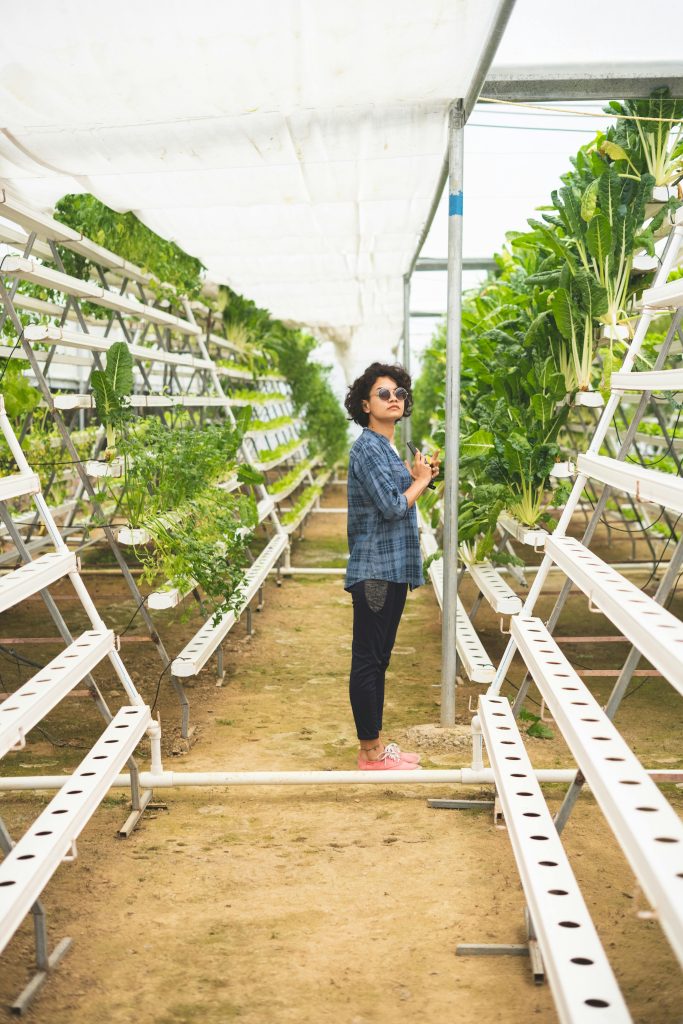
This image is property of images.pexels.com.
Nutrient Absorption
In hydroponics, plants have direct access to the nutrient solution, allowing for efficient nutrient absorption. Unlike in soil-based systems, where plants need to expend energy searching for nutrients through their root systems, hydroponic plants can easily uptake the required nutrients. This efficient nutrient absorption contributes to their rapid growth and healthy development.
Water Efficiency
Hydroponics is known for its water-efficient nature. Compared to traditional soil-based agriculture, hydroponic systems use significantly less water to grow plants. Since water is recirculated in most hydroponic systems, excess water is not wasted. This water-saving characteristic of hydroponics is not only beneficial for the environment but also reduces the overall cost of production.
Crop Cycle
The crop cycle refers to the time it takes for a plant to grow from seed to harvest. In hydroponics, the control over growing conditions allows for shorter crop cycles compared to soil-based cultivation. By providing optimal conditions, hydroponic growers can shorten the time it takes for plants to reach maturity, resulting in more frequent harvests and faster crop turnover.
Examples of Rapid-Growing Hydroponic Plants
Several plant varieties are known for their rapid growth in hydroponic systems. These plants are popular choices among hydroponic growers due to their ability to produce high yields in a short period. Some examples of rapid-growing hydroponic plants include:
Lettuce
Lettuce is one of the most commonly grown hydroponic crops due to its fast growth rate and continuous harvest potential. Different lettuce varieties, such as butterhead, romaine, and loose-leaf, can be grown hydroponically and provide a fresh and nutritious addition to salads and sandwiches.
Basil
Basil is a popular herb that grows exceptionally well in hydroponic systems. With its rapid growth and aromatic leaves, basil is a favorite among both commercial and home hydroponic growers. Its adaptability to different hydroponic systems and its versatile culinary uses make it an excellent choice for hydroponic cultivation.

This image is property of images.pexels.com.
Spinach
Spinach is another fast-growing leafy green that thrives in hydroponics. Known for its high nutritional content, spinach is a popular choice among health-conscious individuals. Hydroponic spinach can be harvested at a young age, allowing growers to quickly enjoy its tender leaves and reap its numerous health benefits.
Kale
Kale, a nutrient-dense leafy green, is well-suited for hydroponic cultivation due to its rapid growth and ability to withstand various growing conditions. Hydroponically grown kale tends to have a milder taste and more tender leaves compared to conventionally grown kale, making it an attractive option for hydroponic growers.
Microgreens
Microgreens are young, tender versions of various vegetables and herbs. These tiny greens are harvested shortly after germination and are packed with flavor and nutrition. Microgreens can be grown rapidly in hydroponic systems, making them a popular choice for home-based growers and commercial farmers looking to add a gourmet touch to their dishes.
Factors That Can Slow Down Growth
While hydroponic systems offer the potential for rapid growth, there are several factors that can slow down plant development and impact overall growth.
Nutrient Deficiencies
An inadequate supply of essential nutrients can significantly hinder plant growth. If the nutrient solution lacks a specific nutrient or if the nutrient levels are imbalanced, plants can exhibit deficiency symptoms. Regularly monitoring the nutrient solution composition and adjusting accordingly can help prevent nutrient deficiencies and promote healthy plant growth.
Pests and Diseases
Pests and diseases can cause significant damage to hydroponic plants, slowing down growth and reducing yields. Common pests in hydroponic systems include aphids, spider mites, and whiteflies. Implementing pest management strategies such as regularly inspecting plants, maintaining cleanliness, and using organic pest control methods can help prevent infestations and keep plants healthy.
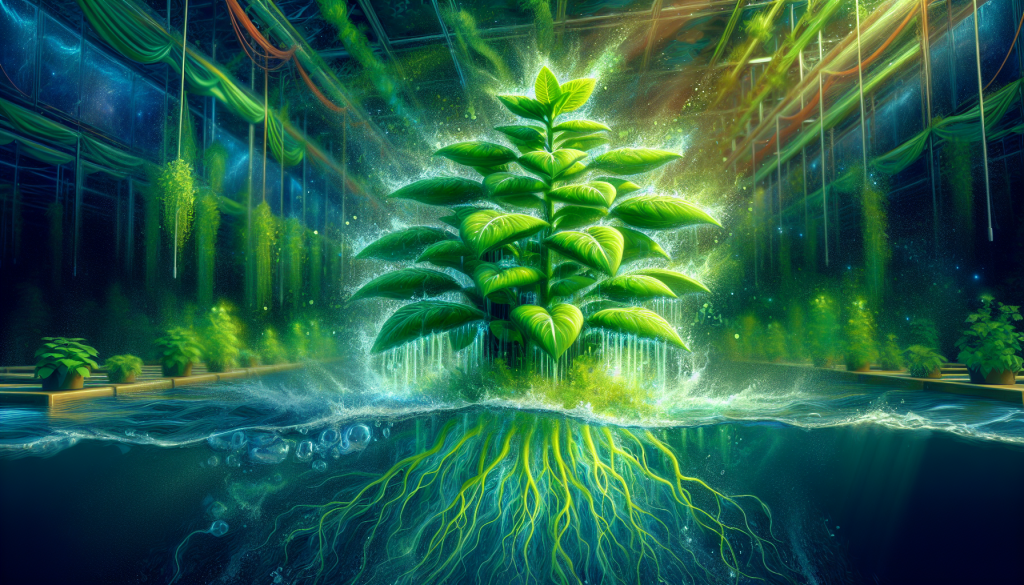
Root Zone Problems
Issues in the root zone can directly impact plant growth. Root diseases, such as root rot, can impair nutrient absorption and restrict root growth. Additionally, root clogging or inadequate aeration can hinder the oxygen supply to the roots, affecting overall plant health. Regular monitoring of the root system and maintaining proper root zone conditions can help identify and address any issues promptly.
Inadequate Lighting
Insufficient or improper lighting can negatively impact plant growth. If plants do not receive an adequate amount of light or if the light spectrum is not optimized for their growth stage, they may not grow as fast as they should. Regularly checking the lighting setup, replacing bulbs if needed, and adjusting light intensity and spectrum based on plant requirements can help ensure optimal growth conditions.
Techniques to Accelerate Growth
To promote rapid growth in hydroponic plants, several techniques can be employed to optimize growing conditions and encourage healthy development.
Supplemental Lighting
Supplemental lighting provides plants with additional light during periods of low natural light, such as winter months or cloudy days. By supplementing natural light with artificial lighting, growers can extend the photoperiod and ensure plants receive adequate light for optimal growth. Supplemental lighting systems, such as LED grow lights, can be customized to mimic specific light spectra and intensities required by different crops.
Optimized Nutrient Solution
Maintaining a well-balanced and optimized nutrient solution is crucial for accelerating plant growth. Conducting regular water and nutrient solution tests, adjusting nutrient concentrations to suit plant needs, and providing necessary supplements such as organic fertilizers can promote healthy growth and enhance crop performance. Consistent monitoring and adjustment of the nutrient solution ensure that plants receive the optimal nutrition required for rapid growth.
Root Zone Aeration
Optimizing root zone aeration is vital for promoting quick and healthy plant growth. Adequate oxygen supply is essential for root health and nutrient uptake. Techniques such as using air stones, air pumps, or incorporating an oxygen-rich environment within the hydroponic system can help ensure sufficient oxygenation of the root zone, boosting plant growth and overall vitality.
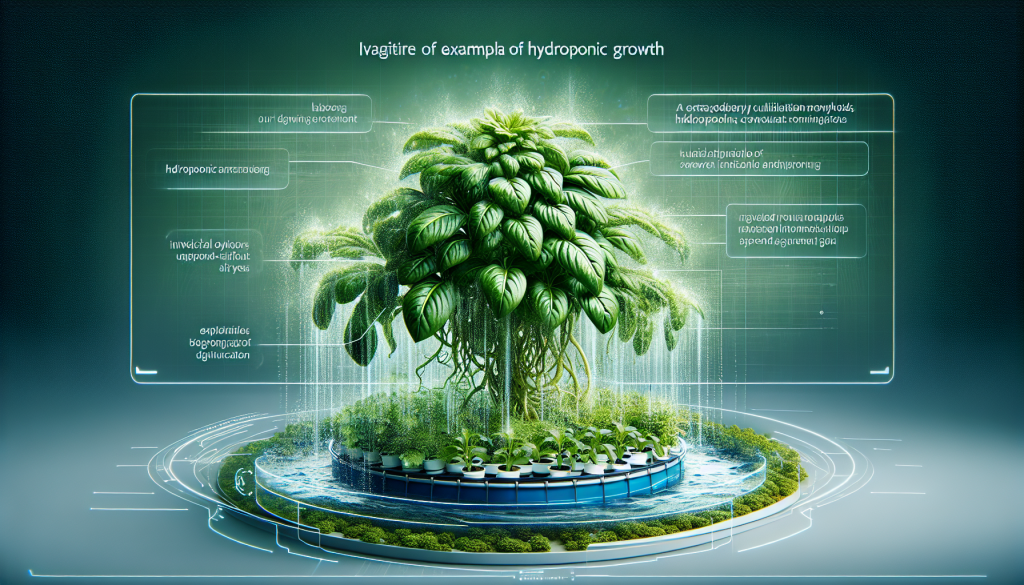
Environmental Monitoring
Regularly monitoring environmental conditions, such as temperature, humidity, light intensity, and CO2 levels, allows growers to detect any fluctuations or imbalances that may hinder plant growth. Using environmental monitoring tools and data loggers can help identify patterns and optimize growing conditions to ensure the best possible growth rates for hydroponic plants.
CO2 Enrichment
Carbon dioxide (CO2) is essential for photosynthesis, and providing adequate levels of CO2 can significantly enhance plant growth and productivity. CO2 enrichment techniques, such as using CO2 generators or injecting CO2 into the grow space, can increase CO2 levels, promoting faster growth rates and higher yields. However, it is important to carefully monitor and control CO2 levels to avoid harmful concentrations that may harm the plants.
Hydroponic Systems
Hydroponic systems come in various designs, each offering specific advantages and suitability for different plant types. Understanding the different hydroponic systems can help growers choose the most appropriate system based on their crop selection, available space, and desired level of automation.
Wick System
The wick system is one of the simplest hydroponic systems, making it ideal for beginners or small-scale growers. In this system, a wick made of a porous material, such as cotton or nylon, transports nutrient solution from a reservoir to the plant’s root system. While the wick system is easy to set up and low-cost, it may have limitations in delivering nutrients and may not be suitable for fast-growing or high-demanding plant varieties.
Water Culture System
The water culture system, also known as the deep water culture (DWC) system, involves suspending plant roots in a nutrient-rich solution. Oxygenation is provided through an air stone or air pump, ensuring proper root health. This system is popular for growing lettuce and herbs, as it offers simplicity, efficient nutrient uptake, and cost-effectiveness.
Nutrient Film Technique
The nutrient film technique (NFT) system involves a thin film of nutrient solution flowing over the roots, providing a constant supply of nutrients and water. This system uses a sloping channel or tube to hold the plants and allow for the nutrient film to pass over the roots. NFT systems are known for their water efficiency and are suitable for growing lightweight crops with short crop cycles.
Drip System
The drip system is one of the most commonly used hydroponic systems. It involves slow and steady dripping of nutrient solution onto the root zone of each plant. This ensures that the root system is consistently supplied with the required nutrients and water. Drip systems offer versatility and precision in nutrient delivery, making them well-suited for a wide range of plant varieties.
Aeroponics
Aeroponics is a high-tech hydroponic system that involves suspending plant roots in the air and misting or spraying them with a fine nutrient solution. The roots are exposed to air, allowing for efficient oxygenation and nutrient absorption. Aeroponic systems are known for their rapid growth rates and water efficiency; however, they can be more complex to set up and maintain.
Maintenance and Care
Proper maintenance and care are essential for the long-term success of any hydroponic system. Regular monitoring and adjustments help ensure that plants receive optimal growing conditions and remain healthy throughout their growth cycle.
Regular Monitoring
Frequent monitoring of all aspects of the hydroponic system, including nutrient solution pH and EC levels, temperature, humidity, and lighting, is crucial to detect any imbalances or issues. Regular observation of plant health and growth progress allows growers to make timely adjustments and prevent potential problems.
pH and EC Adjustments
Maintaining the correct pH and EC levels in the nutrient solution is critical for plant growth. pH levels should be regularly monitored and adjusted if necessary to ensure optimal nutrient availability. Similarly, EC levels should be tested to ensure proper nutrient concentration. These adjustments can be made using pH balancing agents and by adding or diluting nutrient solutions as needed.
Pest Management
Implementing effective pest management strategies is crucial to prevent and control pest infestations. Regularly inspecting plants for signs of pests, removing any affected plants, and implementing natural pest control methods, such as introducing beneficial insects or using organic pesticides, helps maintain a pest-free environment. Maintaining cleanliness in the growing area and regularly sanitizing equipment also contribute to pest prevention.
Cleaning and Sanitization
Hydroponic systems require regular cleaning and sanitization to prevent diseases and maintain optimal growing conditions. Cleaning and sanitizing the growing containers, growing mediums, water reservoirs, and equipment helps prevent the build-up of algae, pathogens, and other contaminants. Non-toxic cleaners and sanitizers can be used, ensuring they are safe for plants and do not leave residue.
Harvesting and Succession Planting
Knowing when and how to harvest hydroponic crops is essential to ensure maximum yield and quality. Additionally, succession planting allows for continuous crop production and a consistent supply of fresh produce.
Determining Harvest Time
The ideal harvest time varies depending on the plant variety and desired maturity level. For leafy greens, such as lettuce or kale, harvesting can begin when the leaves are young, tender, and vibrant green. On the other hand, herbs like basil are typically harvested when the plants have developed enough foliage but have not started flowering yet. Regular observation and experience with each crop will help determine the optimal harvest time.
Crop Rotation
Crop rotation is an important practice in hydroponics to minimize disease and pest issues, maintain soil health (in systems with growing medium), and prevent the depletion of specific nutrients. By rotating crops and not growing the same plant family consecutively, risk factors are reduced, and plants can grow more vigorously.
Continuous Planting
Continuous planting, also known as staggered planting or succession planting, ensures a continual supply of fresh produce by planting new seedlings or seeds at regular intervals. This method allows for overlapping growth cycles, creating a constant harvestable yield throughout the year. Continuous planting helps maximize the use of available space and resources, contributing to higher overall productivity.
Conclusion
Hydroponic cultivation provides an efficient and controlled method of growing plants, offering opportunities for faster growth rates, increased yields, and optimal resource utilization. By understanding and optimizing factors such as lighting, temperature, nutrient solution, and choosing appropriate plant varieties, hydroponic growers can create ideal conditions for rapid plant growth.
Various techniques, such as supplemental lighting, optimized nutrient solutions, root zone aeration, and environmental monitoring, can further accelerate growth and enhance plant performance. Choosing the right hydroponic system, regular maintenance, and proper care are essential for ensuring the long-term success of the operation.
While hydroponics offers many advantages over traditional soil-based agriculture, it is important to note that success requires diligence, attention to detail, and continuous learning. By applying the knowledge and techniques discussed in this article, you can cultivate thriving hydroponic plants and enjoy the benefits of faster growth, higher yields, and nutrient-dense produce.


